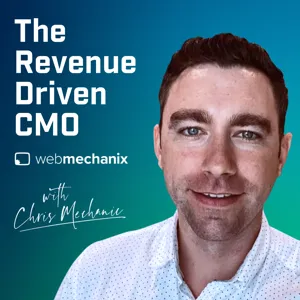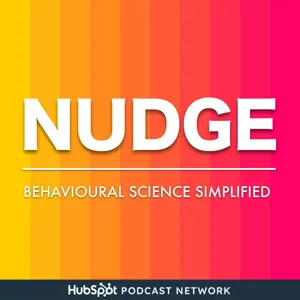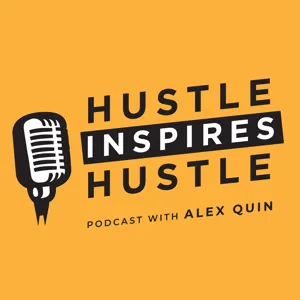Podcast Summary
The Origin of Growth Hacking: Growth hacking is a data-driven approach to help resource-constrained startups grow using software and experimentation, rooted in the late 90s web era.
Growth hacking, coined by Sean Ellis in 2010, refers to a data-driven and experiment-based approach to help resource-constrained startups grow their business. Morgan Fried, VP of Growth at Shopify, shares how he was drawn to growth hacking since his early career in the late 90s when he saw the power of using software to drive customer acquisition and business outcomes. He recalls building websites, online tools, and communities that grew organically and attracted larger audiences, which ultimately led him to the concept of growth hacking. Andrew was not able to share his background during the conversation. Growth hacking has evolved since then, and it continues to be a popular and nuanced concept among founders and startup marketers.
The Emergence of Growth Hacking: A Data-Driven Approach to Business Growth: Growth hacking is a modern marketing strategy that combines product development and marketing to efficiently grow businesses through data-driven decisions.
The term "growth hacking" emerged as a response to the perception that traditional marketing was inefficient and outdated. Sean Ellis, a consultant, started using the term to describe his data-driven approach to growing businesses by tightly coupling marketing and product. This fusion of marketing and product, also known as product-led growth, gained popularity as companies began to prioritize metrics and efficiency over brand building. Ellis' use of the term "growth hacker" was intended to challenge the traditional marketing industry and spark conversation. The term proved effective, leading to the widespread adoption of growth teams in companies.
Blurring lines between marketing, engineering, and product in growth roles: Data-driven decision making and engineering focus are crucial for growth success, leading to overlapping roles between marketing, engineering, and product.
The lines between marketing, engineering, and product roles are increasingly blurring in the world of startup growth. This was evident in the speakers' experiences, where they transitioned from engineering or product backgrounds to leading growth teams. The importance of data-driven decision making and a focus on growth was central to their work, leading to roles that combined elements of product marketing and growth engineering. The original concept of growth hacking was about making marketing more engineering-focused, but over time, the term has evolved to mean quick tips for growth. However, the true essence of growth hacking lies in systematizing growth through a data-driven and engineering-focused approach.
Building sustainable systems for brand and growth: Brand and growth are interconnected, requiring a compounding mindset to create long-term value for businesses through sustainable systems and loops.
Growth is not just about short-term tricks or spending dollars, but rather building sustainable and compounding systems and loops that can help businesses thrive over time. Brand and growth are not mutually exclusive but highly complementary. Brand, as a result of a strong product and customer feelings, is the ultimate growth driver with the highest potential for long-term success. Both brand and growth require a compounding mindset, focusing on creating incremental value for users and the business over time. While there are tactics that can be considered "growth hacks" in branding, such as guerrilla marketing and news jacking, the mental model of hacks as shortcuts should be abandoned. Instead, brand and growth are two areas of work that can drive significant value to the top line of a company over time.
Focus on growth over brand for early-stage startups: Early-stage startups should prioritize growth strategies over brand building, as investors look for traction and market success.
For early-stage startups focusing on growth is more crucial than building a brand. Investors prioritize seeing traction, quantifiable numbers, and market success. While brand does matter, it's typically an accelerator rather than a primary focus for resource-strapped startups. Exceptions include companies that require high levels of trust, such as Airbnb, or those with a major growth loop based on paid advertising, like DTC commerce brands. Founders should first determine their brand identity and understand what they stand for, but initial efforts and resources should be allocated towards growth strategies like improving funnels or engagement loops.
Building brand from the inside out: CEOs play a crucial role in shaping a company's brand and growth hacking is evolving to be more data-driven and integrated into a company's culture for successful product-led growth
Brand is not just a top-down marketing campaign, but rather an inherent part of a company's culture that is driven by the CEO. Katie Banes, from Andreessen Horowitz, shared her perspective on this topic, highlighting examples from her experience at Square and Virgin America. She emphasized that companies that have figured out how to build brand from the inside out have a significant advantage. Growth hacking, as a concept, is not dead but rather evolving to become more data-driven and focused on product-led growth. Teams responsible for growth hacking need to be structured in a way that allows them to effectively leverage data and work closely with product and marketing teams. The most successful growth hacking efforts are those that are integrated into a company's culture and mission from the beginning.
Focusing on crucial aspects of product development: Growth teams in larger companies prioritize optimizing sign-ups, conversions, retention, and notifications to maximize product impact.
The concept of growth teams and data-driven growth efforts have become essential for startups due to their high accountability and potential for high return on investment. This shift has led to the integration of growth methodologies into various aspects of product management, making AB testing and optimization common practices for all teams. However, larger tech companies with significant marketing budgets still benefit from dedicated growth teams to tackle specific, high-impact areas of product development that may not be prioritized by the core product organization. These areas include optimizing sign-up and login flows, conversion funnels, retention drivers, and notifications. Despite the seepage of growth methodologies into other areas, growth teams continue to persist and provide value by focusing on these crucial aspects of product development.
Growth is everyone's job in a startup, but a dedicated growth team is crucial: A growth team coordinates various aspects of a product for user growth, but all teams should work together to ensure success.
A growth team is a crucial cross-functional unit that connects and coordinates various aspects of a product to drive user acquisition, activation, retention, and expansion. However, it's essential not to isolate growth as a separate team's responsibility alone, as growth is everyone's job in a startup. The organizational structure of a growth team can vary depending on the company's size and stage, with centralized, decentralized, or hybrid models. For instance, Facebook has core, product, and growth teams within the products, while Shopify has a centralized growth team, growth marketing, and growth product. It's essential to remember that growth is a shared responsibility, and all teams should work together to cover the necessary surface area for growth to be successful.
Understanding the Evolution and Misconceptions of the 'Growth' Role: The term 'growth' in businesses has evolved from a specific role within interdisciplinary teams to an industrialized concept, leading to confusion and dilution of its original meaning. To build successful network effect companies, it's essential to understand the 'cold start problem' and strategies to overcome it.
The term "growth" in businesses has become highly variable and confusing due to the misuse of language and industrialization of the concept. Originally, growth was defined as a specific role within interdisciplinary teams in software and product companies. However, as the industry evolved, it became industrialized, leading to the creation of large growth teams with various disciplines, including designers, data scientists, product managers, and engineers. This shift led to the term "growth" being applied to various roles and functions within companies, making it difficult to define and understand. Furthermore, the growth industry was often taken over by agencies, freelancers, and consultants, diluting the original meaning of the role. To build successful companies, particularly those based on network effects, it's crucial to understand the concept of the "cold start problem," where the lack of initial users makes it challenging for new users to join and use the product. Andrew's upcoming book, "The Cold Start Problem," delves deeper into this concept and provides insights on how to overcome it.
Solving the cold start problem with growth hacks: To launch a network effect product, solve the cold start problem with tactical growth hacks like Instagram's photo filters, Tinder's college party strategy, and Gmail's invite-only system. Once traction is gained, implement a framework for sustainable growth with strategies like SEO, address book importing, and viral growth.
To successfully launch a product with network effects, it's essential to solve the cold start problem using tactical growth hacks. These hacks can range from Instagram's photo filters to Tinder's college party strategy and Gmail's invite-only system. However, once the product gains traction, a team must implement a framework for sustainable growth. This framework could include strategies like SEO, address book importing, and viral growth. As the product grows, it may face challenges like overcrowding and the need for improved search and discovery. By understanding these phases and employing appropriate strategies, companies can effectively navigate the growth process of network effect products.
Understanding and prioritizing company growth: Having a clear growth focus and understanding different strategies is essential for success. Dedicate resources and evolve with changing stages to build a long-lasting growth engine.
Having a clear understanding of how a company grows and focusing on it deliberately is crucial for success. It's not just about trying out various strategies and hoping something sticks. Instead, having an opinionated point of view on the inputs to growth and dedicating resources to it is essential. As companies scale, having a dedicated growth team or leader becomes necessary to keep the focus on growth as a priority. It's important to recognize that different stages of a company require different approaches, and evolving with those changes is what sets successful companies apart. Understanding frameworks for growth, such as paid, content, or viral strategies, and aligning tactics and strategies accordingly is key to building a long-lasting, compounding growth engine. During the interview process for growth roles, asking candidates to propose a growth strategy for a specific company is an effective way to assess their understanding of growth and their ability to adapt to different approaches at various stages.
Balancing Measurability and Intuition in Growth Teams: Growth teams should balance data-driven decisions and intuition, focusing on both short-term and long-term metrics to ensure success.
While growth teams strive for measurability, not everything can be measured. The universe of what can't be measured is smaller than assumed, and it's essential to distinguish between things that are hard to measure and those that are impossible. Growth teams often focus on measuring what's easy and quick to measure, leading to a short-term orientation. However, short-term retention can be indicative of long-term success. Conversely, using intuition to make decisions can be faster for startups with small customer bases and datasets. Ultimately, it's crucial to strike a balance between data-driven decision-making and intuition. At Reforge, they aim to build frameworks from top industry leaders' successes, making growth strategies meaningful and reusable.
Evaluating new channels for growth requires a balance of data and intuition: To effectively test new growth channels, balance data analysis with intuition and testing. Understand if the channel shows potential and invest in it before evaluating success or failure.
While data is important, relying solely on it for decision-making can lead to "data paralysis" and cause companies to lose focus on their strategic goals. Intuition and testing can be valuable tools, especially when data is limited. When considering new channels for growth, it's essential to evaluate whether they are scalable and align with the company's fundamental ingredients for success. The minimum scope for testing a new channel includes understanding if it shows signs of life and improvement, and committing to the strategy until a minimum barrier is reached. For example, testing SEO requires a density of material and time, so it's crucial to invest in the strategy before evaluating its success or failure.
Growth hacks have a limited lifespan, businesses need to innovate: Effective growth strategies require a strong product-market fit and continuous innovation, as growth hacks lose their effectiveness over time.
While growth hacks can be effective in driving initial growth, their novelty wears off over time as consumers become desensitized to them. Therefore, it's crucial for businesses to continuously innovate and come up with new growth strategies. The industry's progression shows that tactics go through a life cycle, and what works today may not work tomorrow. A good product is the foundation for effective growth strategies, and aggressive growth tactics can magnify a strong product-market fit. For instance, Facebook's success can be attributed to its aggressive growth strategies and strong product-market fit. Conversely, less effective products like Tagged or High Five couldn't be saved by growth hacks alone.
Effective product growth requires strong word-of-mouth and high retention: To grow effectively, focus on building a strong product with high retention and word-of-mouth, especially for network products like marketplaces or networks. Allocate resources wisely to drive growth and scaling.
For a product to grow effectively, it needs to have strong word-of-mouth and high retention. These factors are essential for product market fit and can help drive the success of network products, especially marketplaces or networks. However, for non-network products, it's crucial to consider whether the product itself is not good enough or if the starting network is incorrect if growth isn't occurring. When it comes to budgeting for growth, focusing on one area with high leverage and strong hypotheses is more effective than spreading resources across multiple areas. Historically, budget allocation has been challenging for product-driven startups due to their preference for focusing on product development rather than traditional marketing. But it's essential to allocate resources effectively to drive growth and scaling.
Focusing on headcount and product development for long-term growth: Successful companies invest in engineering and product development to expand, rather than relying solely on marketing for user acquisition.
Successful companies often spend less on marketing and more on headcount and new product initiatives. While this may not immediately solve the problem of acquiring more users, it allows companies to invest in long-term growth through engineering and product development. This strategy involves identifying areas for expansion, such as international markets or new sign-up models, and calculating the resources required to support these initiatives. This process is similar to how product teams decide on core innovations and is essential for scaling a business. Overall, the focus on headcount and product development is a strategic approach to addressing growth challenges and staying competitive in the market.






